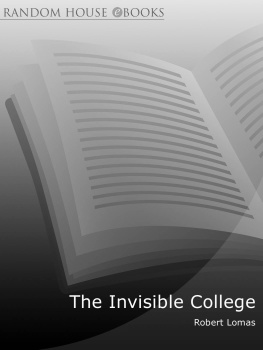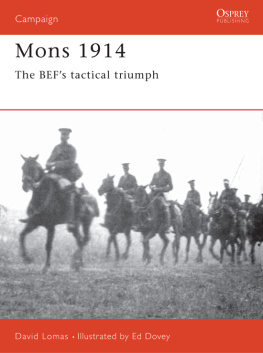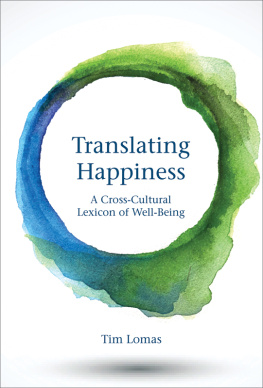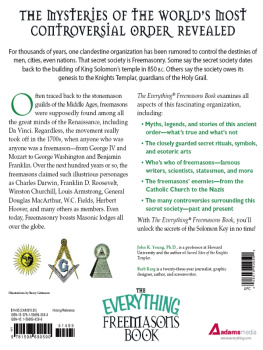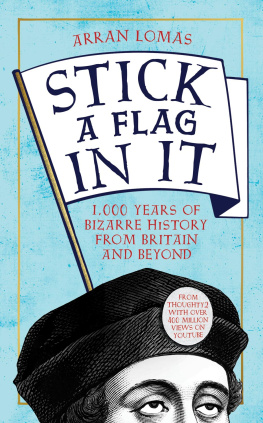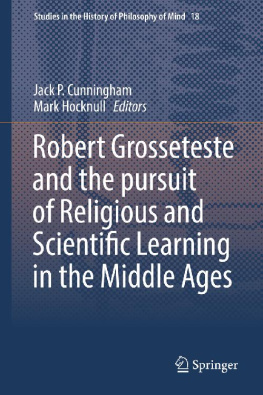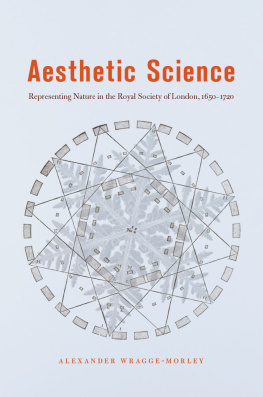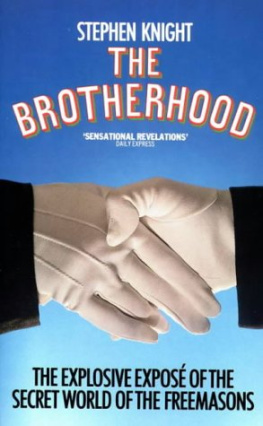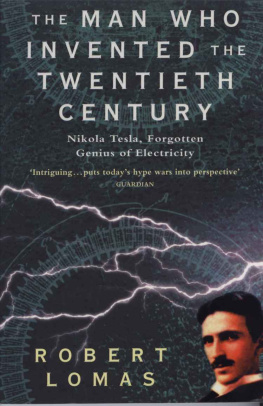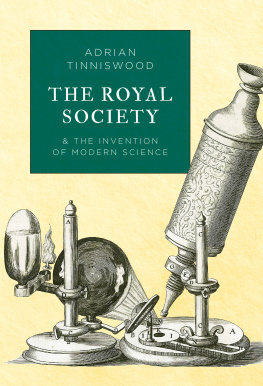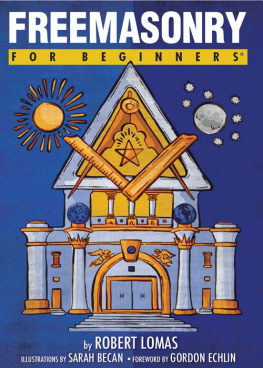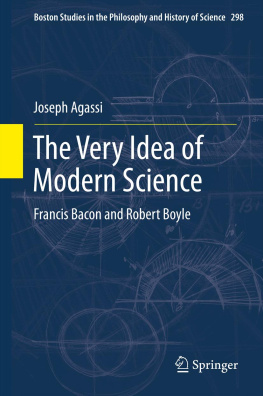About the Book
In 1660 a small group of men, led by Sir Robert Moray, met in London with a secret plan to reshape the world. They were members of the Invisible College, better known today as the Freemasons.
Emerging from the horrors of the Civil War, Britain was a society torn apart by political difference, religious ferment and was still immersed in medieval superstition. It was a country which burnt alive at least one hundred elderly women a year on suspicion of witchcraft. Yet this group, who had recently been sworn enemies, managed to bridge their social and cultural differences to found a new organisation dedicated to the scientific study of nature, the Royal Society.
Robert Lomas reveals in compelling detail how the secret tenets and traditions of the Freemasons laid the groundwork for a new revolution, that gave the world modern, experimental science and founded what is still, 350 years later, the pre-eminent scientific institution in the world.
Contents
One of the more unusual sources of reference used in this research is William Prestons famous book, Illustrations of Masonry, which was first published in London in 1772. This book is difficult for Masons to obtain, and virtually impossible for non-Masons, so to help readers interested in inspecting the original material, the text has been made available at http://www.robertlomas.com.
THE INVISIBLE COLLEGE
The secret history of how the Freemasons founded the Royal Society
Robert Lomas
Jointly dedicated to the memory of
Bro. Sir Robert Moray
Freemason, scientist and spy, and
Dr John Hywel Roberts, who inspired me
with a love of history
Acknowledgements
First Edition
This book would never have been written if not for a casual conversation I had with Norman Macleod, the Assistant Grand Secretary to the Grand Lodge of Antient Free and Accepted Masons of Scotland, during which he asked me the test question, Who was the first Freemason made on English soil? Fortunately, I knew the correct answer, Sir Robert Moray and, reassured, Norman went on to tell me a lot about the importance of Morays role in the Royal Society and talked eloquently about Sir Roberts many aspects as scientist, courtier, spy and Freemason. I would like to thank Bro. Norman, his colleagues at Scottish Grand Lodge and Robert Cooper, the Grand Lodge Librarian, for the help and encouragement they have given me during the research for this book.
I would also like to thank Jenny Finder and her library staff at the Bradford University School of Management for their continuing assistance and cheerful acceptance of strange and unusual requests for long-lost books.
The structure and shape of the book emerged from a series of interesting discussions with my editor, Doug Young of Headline, and my agent, Bill Hamilton of A. M. Heath , who helped me grasp the importance and far-reaching consequences of the changes which the Royal Society set in motion and turned my vague idea into a firm project.
I would also like to thank Jo Roberts-Miller, Ian Marshall, Alan Butler, Chris Turner and Hugh Morgan for their help in the long process of editing and preparing the book for publication.
Finally, I would like to thank my wife and children for their ongoing encouragement.
Acknowledgements
Revised Edition
I would like to thank Simon Thorogood of Transworld Publishing for giving me the opportunity to revise this book in time for the 350th anniversary of the founding of the Royal Society. Since it was first published, in 2002, I have learned more about Sir Robert and his role and am grateful for the chance to revisit the book and to include some extra information.
In April 2007 Gresham College invited me to give a Wednesday Evening Public Lecture entitled Sir Robert Moray Soldier, scientist, spy, freemason and founder of The Royal Society. The event was hosted by Michael Mainelli, the Gresham Professor of Commerce, who also showed me around the college and its records. I am indebted to Professor Mainelli and the staff of Gresham for the additional information about Sir Thomas Gresham and his foundation, which I have been able to add to this volume. The lecture is available as a web cast from Gresham College (http://www.gresham.ac.uk/event.asp?PageId=45&EventId=589).
Many Freemasons have listened to my lodge lectures about Bro. Sir Robert Moray and shared anecdotes about his role in early Freemasonry and I am grateful to them for their hospitality, good fellowship and valued information.
Finally I would again like to thank my wife and family for their continuing support.
PROLOGUE
A Cold Winters Day in Late November
One of the beautiful things about physics is its ongoing quest to find simple rules that describe the behaviour of very small simple objects. Once found, these rules can often be scaled up to describe the behaviour of monumental systems in the real world.
Tim Berners-Lee, 1999
The tall gaunt man walked over to the window and looked out. The previous night had been bitterly cold, and the lawns at the side of his apartment were white with hoar frost. Using what warmth there was in his coarse soldiers hands he melted the ice from inside the casement and looked out east, across the privy gardens towards the cluttered roofs of the palace. The dull grey glow of the low winter sun, as it struggled to climb above the horizon, was giving little hope of anything but an overcast winters day. Still, he thought, perhaps the rain would hold off a little while.
He wasnt in bad shape for a fifty-two-year-old; he tried to keep himself fit and active. He looked towards the sundial , which he had recently constructed for the King in the centre of the lawns, but the light was too diffuse for it to cast any shadow. As he stood shivering in the winters chill of that November morning he thought about the meeting he had arranged for the coming afternoon. Was he taking too great a risk in bringing together this group of men who had been sworn enemies for so long? Would the bonds of a single common interest be enough to persuade these men, who had all suffered so much during the recent war, to sit down together and talk? Was he hoping for too much in trying to persuade them to work together in harmony, to support the newly restored King? He shook his head to clear his thoughts.
A good soldier prepares his battle strategy before the onslaught begins and this man was a good soldier. He knew that it is better to capture an enemy army entire, rather than destroy it. He was aware that to fight, to conquer and then to annihilate his old enemies would not help him to achieve his aims. He needed to break their resistance without a battle. Now was the time to apply the lessons learned during years spent as Quartermaster-General, civil engineer and spy in the armies of Scotland and France. He not only had to persuade his long-time antagonists to work with him, but somehow make them believe that it was their own idea to do so.
How could he do this? Perhaps he could persuade one of the more extreme members of the opposition to chair the meeting? Who, he wondered, had the most to gain? Certainly the man who had lost most was Wilkins. He remembered overhearing that garrulous young clerk of Lord Montagus prattling on, earlier in the week. He was telling how Wilkins, the deposed Master of Trinity College and once favoured brother-in-law to Cromwell himself, was now reduced to preaching for coppers. This ex-Warden of Wadham College was crammed into the squalid lodging of yet another deposed cleric and struggling to survive. Wilkins was reduced to acting as a chaplain for the penny-pinching lawyers of Grays Inn. He presented such a sorry spectacle that he was beginning to attract voyeurs to the Temple church, to marvel at the extent to which the family of the late Lord Protector could be humiliated.
Next page
